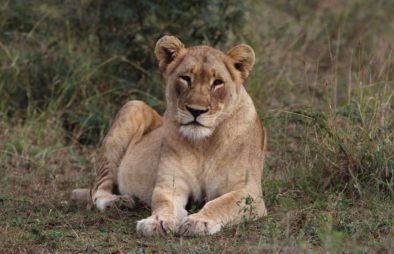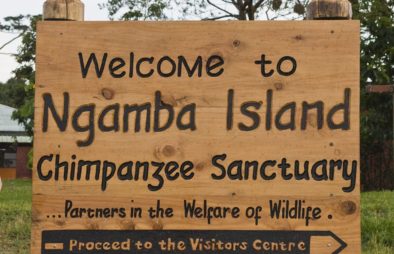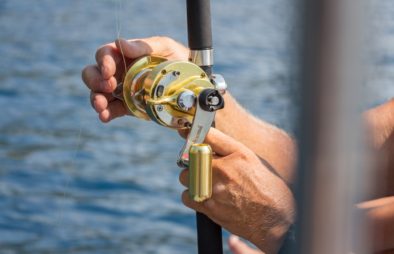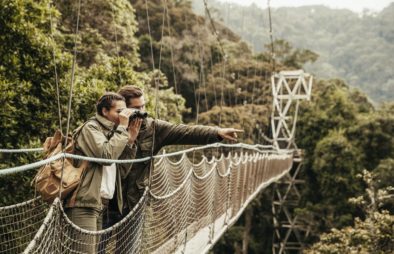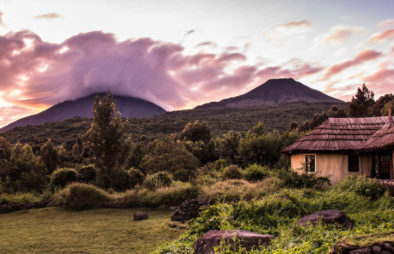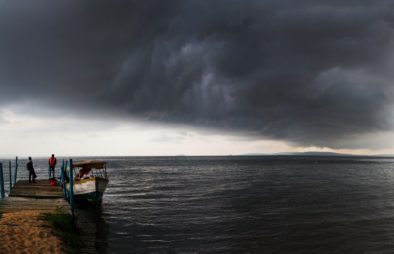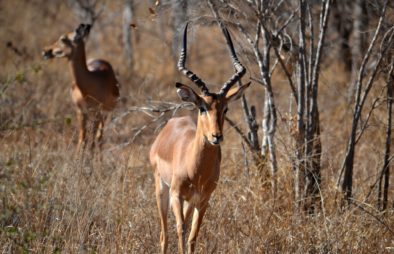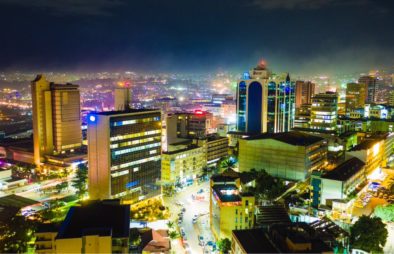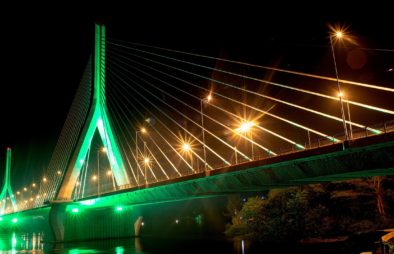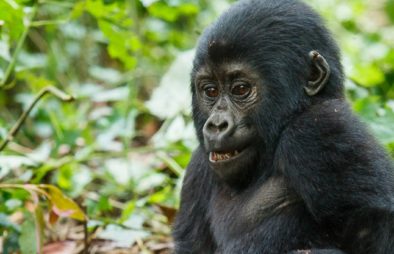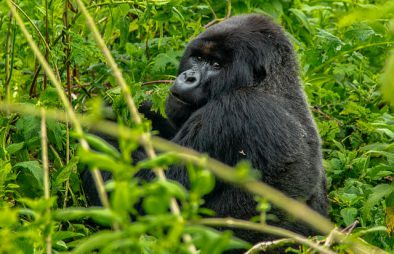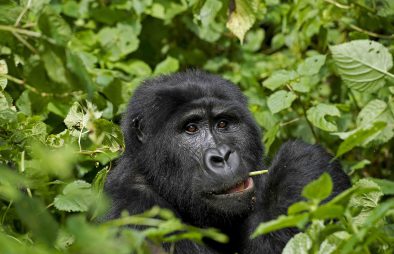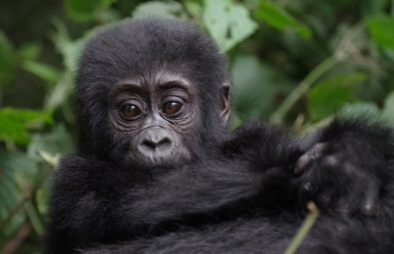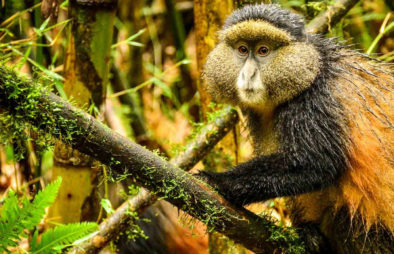Queen Elizabeth National Park
Soaked in history, high biodiversity and legend is the iconic Queen Elizabeth National Park-one of the most spectacular and popular safari destinations of Uganda. East African visitors longing to explore vast landscapes marked by wide range of wildlife and bird species take trips to the western side of the country. Take a journey of exploration to encounter four of the big five animals-Cape buffaloes, elephants, leopards and lions and discover the real wilderness of Uganda.
Size of Queen Elizabeth National Park
The Park covers an area of 197800 hectares, making it the country’s second largest National Pars, extending from Lake George area in the north-east to Lake Edward in its south-west in addition to covering districts of Kasese, Rukungiri, Rubirizi and Kamwenge.
History of Queen Elizabeth National Park
The western side of Uganda where the Park sits was first gazetted as Kazinga National Park in 1952 but after the legendary visit of Queen Elizabeth II in 1954, the Park was renamed “Queen Elizabeth National Park.
Location
Queen Elizabeth National Park is found within the western part of Uganda and also lies astride the Equator. It is one of the most spectacular places in Africa, comprised of a number of physical features that makes it a medley of wonders. It is not just wildlife and birds that will make you appreciate this Park but also stunning views of Kazinga Channel connecting Lakes Edward and George.
This Park just never ceases to amaze because it also lies within the Albertine Rift region alongside the exceptionally beautiful Kigezi and Kyambura Wildlife Reserves, hence making it one of Africa’s most diverse places. If you are looking for diversity during your Uganda safari, then make a strip to Queen Elizabeth National Park where you will experience numerous wildlife and bird species, Freshwater and saline Crater Lakes, woodlands, forest, savannah plains dotted with acacia and many other spectacular features that will take your breath away.
Unmissable Things to See In Queen Elizabeth National Park
Wildlife
Queen Elizabeth National Park alone shelters over 95 species of mammals scattered throughout the different areas of its landscape. Expect views of spotted hyenas, duikers, Banded mongoose, the elusive leopards, Topis, Defassa waterbucks, black and white colobus monkeys, serval cats, Cape Buffaloes, vervet monkeys, common warthogs, lions, elephants, Hippos, Olive baboons, Uganda Kobs, common elands, bushbucks, chimpanzees and many others. This Park is one of the few places in Africa where you will see the highest concentrations of Hippos and this is possible during the boat cruise along Kazinga Channel.
Up to 6 species of primate species including the endangered Chimpanzees, Olive baboons, Vervet monkeys, black and white colobus monkeys and red-tailed monkeys are all found in the isolated and underground forest in the Kyambura gorge.
Birdlife
As one of the 33 Important Birding Areas in Uganda, Queen Elizabeth National Park shelters about 600 species of birds, 60% of the total bird species in the country. The Park’s different habitats and ecosystems in form of wetlands, woodlands, savannah plains, Lakes, forests and others are some of the phenomenal birding spots. Don’t miss sights and sounds of shoebill storks, Pelicans, Grey-headed kingfishers, African skimmer, African Mourning doves, Flamingos, pel’s fishing owls, Nubian woodpecker, Swamp flycatcher, Palmnut vultures, slender-tailed nightjar, Papyrus gonolek, collared pratincoles, and grey-headed kingfisher and several migratory species among others.
The Equator
Queen Elizabeth National Park is located astride the Equator, and the landmark is indicated with a circular sculpture which you will see during your visit in this popular safari destination. Get a chance to take photos and experiment some of the Equator demonstrations.
Crater Lakes
A number of Crater Lakes (totaling to 10) in Queen Elizabeth National Park just beautify its landscape. The most popular ones include Lake Katwe in the north of Mweya Peninsular, Lakes Nyamunuka and Bunyampaka-popular stop points for migratory bird species and this excellent birding spots of the Park.
The Kyambura Gorge
Kyambura Gorge is the narrow strip of verdant Tropical forest in the middle of the extensive savannah plains of Queen Elizabeth National Park. This is where chimpanzees of this Park are spotted and trekked.
Captivating things to do within Queen Elizabeth National Park
Game drives
The Northern plains of Queen Elizabeth National Park are the most rewarding game viewing spots, offering both day and night drives with a touch of nature and exception. These places include Northern Kazinga Plains and Kasenyi Plains where lions, spotted hyenas and leopards will be spotted stealthily walking through the tall grass to catch unsuspecting Uganda Kobs, bushbucks, Topis, duikers and warthogs.
Also expect small and large herds of African bush elephants, Cape buffaloes, Hippos, Defassa waterbucks, olive baboons, giant forest hogs and sometimes Banded mongoose can be seen across the landscapes of Queen Elizabeth National Park.
Boat Cruises along the Kazinga Channel
Boat Cruises along the Kazinga Channel are the best way to see high concentrations of Hippos and Nile crocodiles during Uganda safaris, in addition to a number of water and wetland bird species. The Boats used are spacious and comfortable with seating and standing/decker capacity of 40 persons and these rides last between two and three hours. Not only will you see wallowing Hippos and basking Nile crocodiles but also relaxing/or bathing African bush elephants, Uganda Kobs, Topis and buffaloes along the banks of the Channel. The northern plains have the highest lion population in Queen Elizabeth National Park, owing to the availability of prey (mostly Uganda Kobs).
The pink-backed pelicans, Malachite and pied kingfishers, Grey-crowned cranes, African fish eagles, giant kingfishers, Rufous-bellied herons, Great white pelicans, Papyrus canary, Papyrus gonolek, red-chested sunbirds, and occasionally shoebill storks will be spotted during the boat cruises along Kazinga Channel.
Birding Tours
Over 600 species of the aquatic bird species, wetland, Central African bird species, forest, and savannah species in Queen Elizabeth National Park alone, it is not surprisingly that it is one of the 33 Important Birding Areas in Uganda. The highest number of species can be spotted within Lake Kikorongo, Ishasha sector, Katunguru Bridge area, Katwe area, Kazinga Channel, Kasenyi sector, Maramagambo forest, Mweya Peninsula and never leave out the different Crater Lakes for migratory species.
The must-see species during birding tours in Queen Elizabeth National Park include Papyrus gonolek, African fish eagles, Red-chested sunbirds, Martial eagles, shoebill storks, Malachite kingfishers, Great white pelicans, pink-backed pelicans, white-winged terns, grey-crowned cranes, Giant kingfishers, pied kingfishers, Pel’s fishing owls, African broadbills, Papyrus gonolek, greater and lesser flamingos, white-tailed Larks, Chapin’s flycatcher, Great blue Turaco, Bar-tailed Godwit, Rufuous-bellied herons, yellow-throated Cuckoo, Black bee-eaters and many other species.
Chimpanzee trekking within Kyambura Gorge
Chimpanzee trekking in Queen Elizabeth National Park is conducted within Kyambura gorge, at the extreme North-eastern side of the Park. The narrow strip of underground forest offers unforgettable trekking experiences, conducted in two sessions-mornings and afternoon.
Chimpanzee treks begin at 8:00am for morning sessions and 2:00pm for afternoon sessions but last between 1 and 3 hours before these Great Apes are finally found. Much as chimpanzees are the highlights of Kyambura tours, visitors are also treated to views of other primates especially the black and white colobus monkeys, olive baboons and red-tailed monkeys, not leaving out birds and tree species.
Experiential tourism
Queen Elizabeth National Park is one of the few places in the African Continent where extraordinary experiential tourism is conducted. They include Mongoose tracking, lion tracking and Hippo Census, offering opportunities of coming into close proximity to animals that you never pictured yourself encountering. Follow a team of researchers to locate and learn habituation calls in addition to exceptional behavior of lions, King of the Jungle.
Guided bush walks
You can identify animals by their footprints or droppings, see hidden wildlife, exceptional habitats and rare bird species of Queen Elizabeth National Park through guided bush walks. You will get into close contacts with Lions, common warthogs, leopards, African Rock pythons, hippos, Defassa waterbucks, Uganda Kobs and many others in the company of armed guides.
Guided Cultural tours
When you mention Safari tours to Queen Elizabeth National Park, it is not just nature, wildlife and birds that we are talking about but also culture of the surrounding communities. During your visits to this Park, undertake cultural tours to Nyanz’ibiri Cave Community, Kasoga Community Experience, Leopard Village and Kikongoro Women Community for a moment of excitement and cultural experience. Expect traditional handcraft demonstrations, traditional dance performances, community birding experiences and finally get to buy some items/souvenirs like such as baskets, stools, African clothes, craft shoes and many others.
Accommodation facilities within or around Queen Elizabeth National Park.
Visitors to Queen Elizabeth National Park never run short of ideas when it comes to accommodation facilities. There are different options for budget, midrange and luxury visitors. These facilities include Bush Camp, Enganzi Game Lodge, Queen Elizabeth Safari Camp, Jacana Safari Lodge, Mweya Safari Lodge, Kyambura game Lodge, Elephant Plains Lodge, Hippo Safari Lodge, Ihamba Safari Lodge, Ishasha Wilderness camp, Kyambura Tented Camp, Kazinga Channel View Resort, Kasenyi Safari Camp, Katara Lodge, Mweya Hostels and Cottages, Queen Elizabeth Bush Lodge, Simba Safari Camp, Pumba Safari Cottages, and many others.
Best Time of the year to Explore Queen Elizabeth National Park
Queen Elizabeth National Park is an all year round safari destination, with every month of the year offering different highlights. Whatever month you choose to explore this National Park, you will not be disappointed.
Game Drives are best during the dry season-months of January, February, June, July, August, September and December when animals gather around water points. The wet season-months of March, April, May, October and November are characterized by more waterholes, verdant vegetation, numerous newborn animals and the migrant birds also arrive. However, the vegetation also becomes denser thus making it more difficult to find and observe animals.
How to get there
Whether you wish to drive or fly to Queen Elizabeth National Park in the western side of Uganda, you will be guaranteed of comfort and memorable experience. Fly in on a chartered or scheduled flight by Aerolink from Entebbe International Airport to Mweya, Kasese or Ishasha airstrip.
Alternatively, you can make a road trip by a 4WD Vehicle and be in Queen Elizabeth National Park within 5-6 hours’, using two routes-the southern route- of Kampala-Masaka-Mbarara-Bushenyi-Kasese or the northern route of Kampala-Mubende-Fort Portal.

